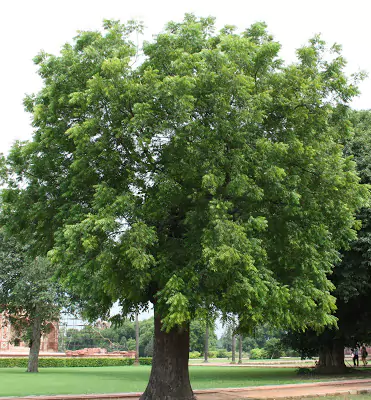Neem Tree
Neem, (Azadirachta indica), fast-growing tree of the mahogany family (Meliaceae), valued as a medicinal plant, as a source of organic pesticides, and for its timber. Neem is likely native to the Indian subcontinent and to dry areas throughout South Asia. It has been introduced to parts of Africa, the Caribbean, and numerous counties in South and Central America. The plant has long been used in Ayurvedic and folk medicine and is used in cosmetics and in organic farming applications.
Neem trees can reach 15–30 metres (49–98 feet) in height and have attractive rounded crowns and thick furrowed bark. The compound leaves have toothed leaflets and are typically evergreen but do drop during periods of extreme drought. The small fragrant white flowers are bisexual or staminate (male) and are borne in clusters in the axils of the leaves. The fruit is a smooth yellow-green drupe and has a sweet-flavoured pulp.
Uses
Nearly every part of the neem tree is useful, and many of its medicinal and cosmetic applications stem from its strong antibacterial and antifungal properties.
- Hair and Skin Care: Neem is commonly found in shampoos formulated to treat dandruff and in soaps and creams for managing skin conditions such as acne, psoriasis, and athlete’s foot.
- Oral Hygiene: Neem is often used in toothpastes and mouthwashes, particularly in South Asia. In rural areas, young neem twigs are sometimes used as crude toothbrushes due to their cleansing properties
- Diabetes Management: Neem leaves have a long history as a traditional remedy for diabetes, and some clinical studies suggest that it may aid in blood sugar control.
